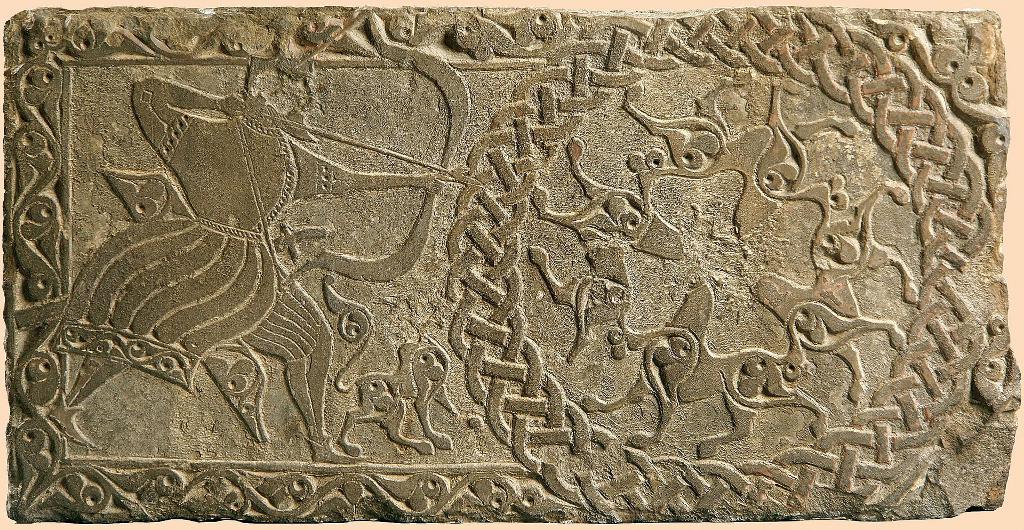|
Tamara Talbot Rice ANCIENT ARTS OF CENTRAL ASIA Stone relief of a hunt. Daghestan, 12th century A larger image of the stone relief of an archer hunting. Daghestan. |
|
Tamara Talbot Rice ANCIENT ARTS OF CENTRAL ASIA Stone relief of a hunt. Daghestan, 12th century A larger image of the stone relief of an archer hunting. Daghestan. |
Illustration 250, p261 in Tamara Talbot Rice, Ancient Arts of Central Asia, 1965
250 Stone relief from Daghestan. Hunting scenes were popular subjects in the arts of the Caucasian area from prehistoric times onwards. This late example still reflects influences from Achaemenid, Scythian, Sassanian, Parthian and Islamic styles. Twelfth century
Referenced as figure 423 in The military technology of classical Islam by D Nicolle
423. Relief, 12th-13th centuries AD, Dāghistānī, Hermitage, Leningrad (Ric A).
Vol 1. p.221:
Cheek-pieces may have been referred to as asbād53 in 7th century Arabia where they might still have been used, as they apparently were in Visigothic Spain.54 Soon, however, cheek-pieces were largely abandoned, judging by the pictorial evidence, and in fact their continued portrayal in a few later sources may be little more than an artistic convention. By the early 14th century, however, an entirely new form of protection for the side of the head seems to have appeared consisting of separate round plates (Figs. 13, 45, 67, 90, 91, 190A, 354, 360, 410, 423, 429, 431, 433, 439, 440, 447, 448, 553 and 643).
53. Al Jarbūʿ op. cit., pp. 227-228.
54. Hoffmeyer, Arms and Armour in Spain, vol. I, pp. 77-78.
Vol 2. p.303:
Another frontier from which such tribal levies were drawn was the Caucasus. From south of the main range came the Albanians, whose kingdom was the third of that region, after Georgia and Armenia. Not much is known of their military traditions except that were noted for their armour of metal and leather as early as the 1st century BC.59 In fact this area, to be known as Dāghistān in later Muslim times, was to remain a major arms-producing centre throughout much of the Middle Ages, while its warlike inhabitants were to be described as armoured cavalry in the annals of many nations. Many traditional Iranian military styles, as well as other pre-Islamic cultural characteristics, were to persist in this part of the Caucasus for many centuries.